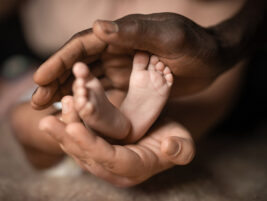Reviewed by: Deborah J Weatherston (USA) (Associate Editor, WAIMH Perspectives)
Does Time Heal All? Exploring Mental Health in the First 3 Years
Miri Keren, Doreet Hopp, Sam Tyano (2017), (L. Lazar, Trans.). Washington, D.C.: ZERO TO THREE
The book is dedicated to the babies we were…and the babies to come…
The dedication sets the frame as the book unfolds, beginning with the baby’s place throughout history and exploring parenthood from an historical perspective, continuing with concepts embedded in infant psychiatry and addressing significant challenges as experienced by the baby – crying, self-regulation, sleep and eating – and sensitive to the parents’ experiences. The authors are careful to present normative developmental pathways before moving to atypical disorders of infancy and the diagnostic process as well as treatment methods.
The range and depth of issues warranting attention in the early years are numerous and urgent, pertinent to the work of infant and early childhood mental health professionals working across systems, in a variety of settings and at multiple levels of risk. For example, Chapter 10: I’m Sad, asks how it is possible that babies can be depressed, followed by discussion of the etiology of depression in infancy, e.g. loss of a parent and prolonged grieving, emotional deprivation and neglect, maltreatment, terminal illness in the baby, chronic physical pain.
In addition to offering ways to consider or diagnose depression, the authors include differential diagnosis and comorbidity, the courses of treatment of depression in infancy that are possible, often including dyadic or triadic work with families, with references to the Diagnostic Classification of Mental Health and Developmental Disorders of Infancy and Early Childhood (DC:0-5) the impact of depression on a child’s development over time.
Case studies enrich this chapter, as in many of the chapters, and recommended references invite further study. The authors are careful to keep the needs of the baby in mind, preserving the infant’s voice. This is well balanced with empathic response and attention to the needs of parents. Of great importance is the message that early identification, preventive intervention and treatment are essential to the wellbeing of children across the world. Time does not heal all.
In summary, the book addresses real-life situations in the world of babies and toddlers and the thin line separating norm and pathology. It contains up-to-date theoretical knowledge on child development (from birth to 3 years old) in clear, easy-to-understand language, peppered with detailed stories, folktales, and contemporary adult literature. These combine to form a book that is fascinating, informative, and innovative (ZERO TO THREE, 2018).
Authors
Reviewed by: Deborah J Weatherston (USA)
Associate Editor, WAIMH Perspectives








